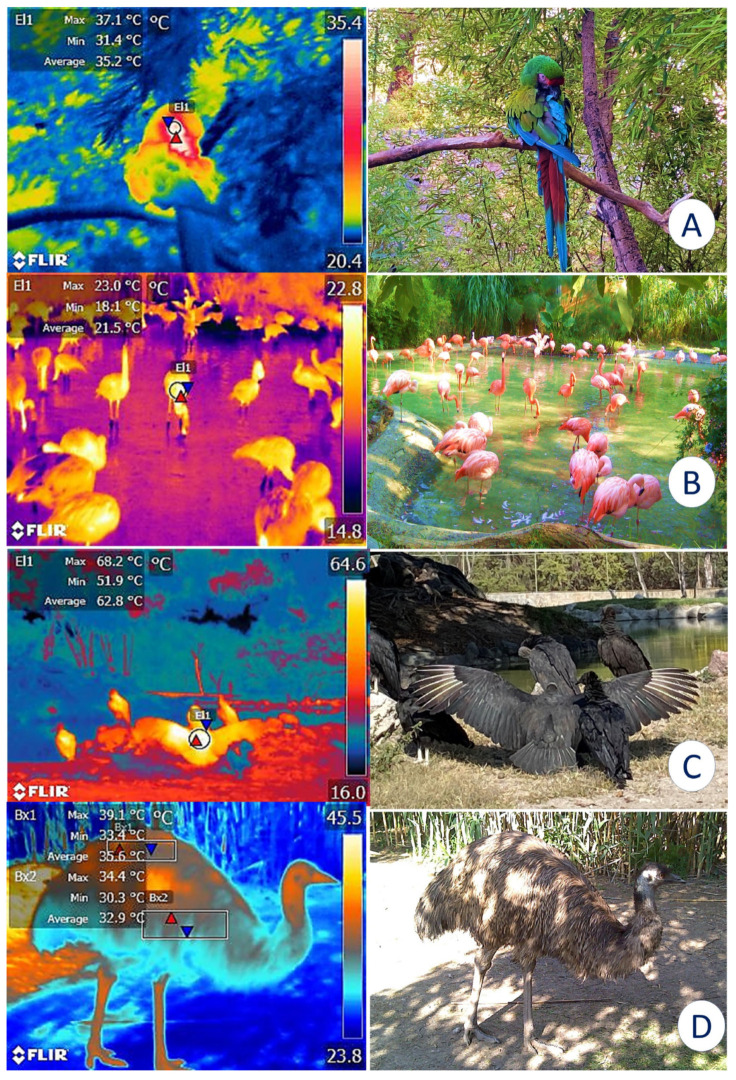Figure 12.
Differences in the thermoregulatory performance of birds with different types of feathers. (A). Radiometric image of a military macaw (Ara militaris) at rest on a perch. In this species, the ocular window can serve to evaluate thermal responses by detecting average ocular temperatures (El1) (35.2 °C). (B). The dorsal region (EL1) of flamingos (Phoenicopterus ruber) covered by feathers registered an average value of 21.5 °C despite direct exposition to solar radiation. (C). In contrast to the light-colored feathers of the flamingo, the dorsal area (El1) of a black vulture (Coragyps atratus) shows an average temperature of 62.8 °C with a maximum value of 68.2 °C. In the digital image of the vulture, a spread-wing posture is observed. This is a thermoregulatory behavior that helps dissipate heat when birds experience temperatures above their thermoneutral range. (D). Infrared reading of an emu (Dromaius novaehollandiae) where the temperature in the dorsal (Bx1) and ventral regions (Bx2) can be compared, observing an average difference of 6.2 °C. This difference may be attributable to the presence of long feathers that aid in dissipating heat. (Radiometric images and photographs by the authors). Maximum temperature (red triangle), and minimum (blue triangle). Thermal images obtained using a FLIR thermal camera.

